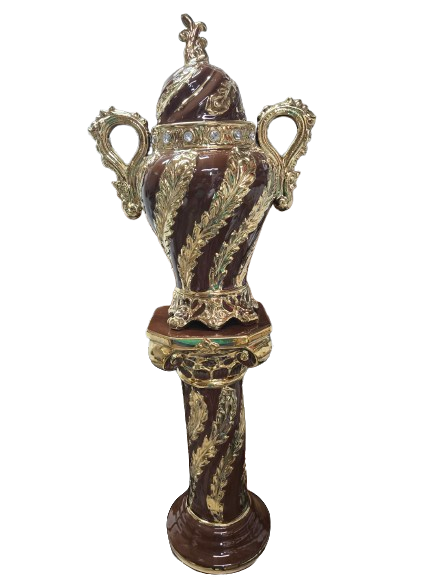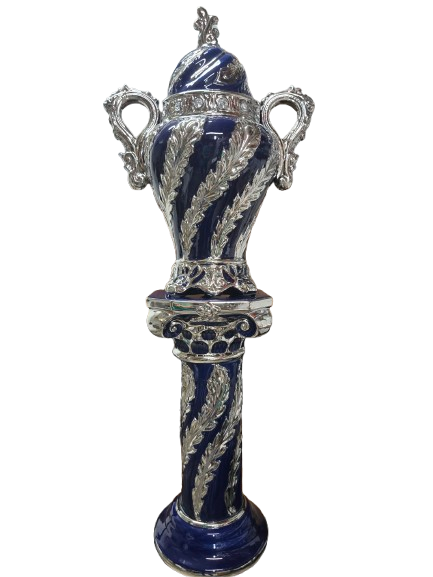Exploring the Mystical Origins of Oya Orisha History
Oya, the fierce goddess of winds and storms, holds a powerful place in the pantheon of Orishas. Known for her transformative and protective energies, she is a figure wrapped in mystique and reverence. In this blog, we will journey through the surprising and profound origins of Oya Orisha history, exploring her roles, symbolism, and influence on cultures across the world.
The Origins of Oya: A Brief Historical Overview
Hailing from the Yoruba tradition, Oya is a prominent deity embodying the forces of change and chaos. Understanding these origins offers insight into how she came to be venerated across various African and African Diaspora communities. Often compared to Maman Brigitte in Haitian Vodou, Oya’s story begins in Yoruba mythology, where she lived as a mortal woman before ascending to godhood. Her journey from human to deity symbolizes transformation—a core aspect of her divine persona.
Oya’s historical journey is deeply tied to the practice and spread of the Yoruba religion through the transatlantic slave trade. As enslaved peoples carried these traditions to the Caribbean and the Americas, Oya’s influence spread into practices such as Santería and Candomblé. This cultural diffusion underscores her importance and enduring legacy across continents, as each adaptation of her worship reflects unique societal needs and challenges embraced by her followers.
Symbolism and Powers Attributed to Oya
As the goddess of wind, lightning, and storms, Oya’s symbolism is intertwined with the elements. Her powers signify transformation, protection, and the courage to confront life’s challenges, making her a unique figure within Orisha worship. Known as a warrior goddess, Oya wields tremendous power, often depicted carrying a sword and embodying the fierce winds that precede a storm. Her connection to both life and death emphasizes her dual role as a protector and a harbinger of change, marking her as a guardian of life’s transitions.
Oya’s vivid imagery also encompasses fertility and nurturing aspects, symbolized through her buffalo horns and motherly associations. Her link with the River Niger epitomizes her life-giving and transformative qualities, embodying both creation and destruction. This duality further positions her as a deity of profound change—whether through nurturing new beginnings or seizing away stagnation, Oya facilitates renewal and progress.
Oya’s Role in Yoruba Mythology and Rituals
In Yoruba mythology, Oya plays a crucial role as both the bringer of change and the guardian of cemeteries. Her presence is often invoked in rituals that honor life’s transitions, showcasing her multifaceted influence in ritualistic practices. From her marital associations with Shango, the god of thunder, to her profound connections with the spirit world, Oya’s involvement in these myths provides a deeper understanding of her dynamic nature and pivotal role in the Yoruba spiritual landscape.
The celebration of Oya in various festivals highlights her importance within spiritual communities. Events such as the Egungun festival honor ancestral spirits, with Oya invoked for protection and guidance. Through music, dance, and offerings, these festivals reflect the community’s respect for Oya’s power over the elements and the spirit world, reaffirming her status as a key figure in Yoruba cosmology.
Influence of Oya in Modern Spiritual Practices
Beyond historical contexts, Oya continues to inspire modern spiritual practices. From inspiring resilience to guiding personal transformations, her presence is felt within contemporary Orisha worshippers. Her attributes resonate with individuals seeking change or courage, marking her as an empowering figure for modern devotees.
Oya’s influence reaches into modern feminist movements, where her role as a protector of women and children speaks volumes. Her myths and stories offer inspiration for those advocating for gender equality and women’s strength, emphasizing her timeless relevance in navigating societal challenges. This powerful legacy contributes to a growing appreciation of Oya’s impact on identity and empowerment.
Oya’s Cultural Impact Across the Globe
Through the spread of African diasporic cultures, Oya’s influence has permeated beyond Africa into regions such as the Caribbean and South America. Understanding her global impact provides a broader appreciation for her enduring legacy. In Brazil, she is revered as “Iansã,” a protector of women’s rights and a symbol of passionate strength, while in Cuba’s Santería, she is venerated as “Ochún,” embodying resilience and empowerment amid life’s adversities.
Incorporating Oya’s influence into diverse artistic expressions further highlights her universal appeal. From literature to music, her presence is celebrated in various forms across the African Diaspora, showcasing her ability to inspire creativity and resilience in communities worldwide. This cultural impact is continually reflected in the artistic and spiritual narratives that honor her legacy, underscoring her unyielding presence in the fabric of global spirituality.
Embracing Oya’s Everlasting Influence
As we unravel the lore and influence of Oya, it becomes clear that her essence transcends time and geography. Her story inspires courage and change, reminding us of the power within and the importance of embracing transformation. Oya’s legacy continues to guide and protect those who seek her wisdom.





































Dejar un comentario